当前位置:网站首页>[robot hand eye calibration] eye in hand
[robot hand eye calibration] eye in hand
2022-07-06 02:12:00 【Ten year dream laboratory】
/*hand-eye calibration using TSAI method*/
#include <stdlib.h>
#include <iostream>
#include <fstream>
#include <opencv2/core/core.hpp>
#include <opencv2/calib3d/calib3d.hpp>
#include <opencv2/highgui/highgui.hpp>
#include <opencv2/imgproc/imgproc.hpp>
#include <eigen3/Eigen/Core>
#include <eigen3/Eigen/Geometry>
#include <eigen3/Eigen/LU>
#include <eigen3/Eigen/Dense>
#include <eigen3/Eigen/StdVector>
#include <opencv2/core/eigen.hpp>
#define PI 3.1415926
using namespace std;
using namespace cv;
using namespace Eigen;
//https://www.cnblogs.com/long5683/p/10094122.html
int num_of_all_images = 70;// shooting 70 Time ?
// Number of inner corners in row and column direction
cv::Size board_size = cv::Size(9, 7);//9 That's ok 7 Column Corner point
// Calibrate the actual size of the checkerboard ( The unit should be connected with pose.txt The units of robot position in the are the same ) mm
cv::Size2f square_size = cv::Size2f(25, 25);//25x25mm
Eigen::Matrix3d skew(Eigen::Vector3d V);// Antisymmetric matrix . Generated by vectors
Eigen::Matrix4d quat2rot(Eigen::Vector3d q);// Unit quaternion turns Rotation matrix
Eigen::Vector3d rot2quat(Eigen::MatrixXd R);
Eigen::Matrix4d transl(Eigen::Vector3d x);
Eigen::Matrix4d handEye(std::vector<Eigen::Matrix4d, Eigen::aligned_allocator<Eigen::Matrix4d> > bHg,
std::vector<Eigen::Matrix4d, Eigen::aligned_allocator<Eigen::Matrix4d> > cHw);
Eigen::Matrix4d handEye1(std::vector<Eigen::Matrix4d, Eigen::aligned_allocator<Eigen::Matrix4d> > bHg,
std::vector<Eigen::Matrix4d, Eigen::aligned_allocator<Eigen::Matrix4d> > cHw);
int handEye_calib(Eigen::Matrix4d &gHc, std::string path);
// skew - returns skew matrix of a 3x1 vector.
// cross(V,U) = skew(V)*U Cross product calculation
// S = skew(V)
// 0 -Vz Vy
// S = Vz 0 -Vx
// -Vy Vx 0
// See also: cross
Eigen::Matrix3d skew(Eigen::Vector3d V)// Antisymmetric matrix
{
Eigen::Matrix3d S;
S <<
0, -V(2), V(1),
V(2), 0, -V(0),
-V(1), V(0), 0;
return S;
}
// quat2rot - a unit quaternion(3x1) to converts a rotation matrix (3x3)
// The unit is 4 yuan (3x1) Transform rotation matrix (3x3)
// R = quat2rot(q)
//
// q - 3x1 unit quaternion The unit is 4 yuan
// R - 4x4 homogeneous rotation matrix (translation component is zero) 4x4 Homogeneous rotation matrix ( The translation segment is 0)
// q = sin(theta/2) * v The unit is 4 yuan :
// theta - rotation angle Rotation angle
// v - unit rotation axis, |v| = 1 Unit rotation axis
//
// See also: rot2quat, rotx, roty, rotz, transl, rotvec
Eigen::Matrix4d quat2rot(Eigen::Vector3d q)
{
double p = q.transpose()*q;// Unit quaternion length
if (p > 1)
std::cout << "Warning: quat2rot: quaternion greater than 1";// Make sure it's a unit quaternion
double w = sqrt(1 - p); // Calculation q.w // w = cos(theta/2)
Eigen::Matrix4d R;
R << Eigen::MatrixXd::Identity(4, 4);// Initialize homogeneous identity matrix
Eigen::Matrix3d res;
res = 2 * (q*q.transpose()) + 2 * w*skew(q);
res = res + Eigen::MatrixXd::Identity(3, 3) - 2 * p*Eigen::MatrixXd::Identity(3, 3);
R.topLeftCorner(3, 3) << res;// Replace the rotation matrix
return R;
}
// rot2quat - converts a rotation matrix (3x3) to a unit quaternion(3x1)
//
// q = rot2quat(R)
//
// R - 3x3 rotation matrix, or 4x4 homogeneous matrix
// q - 3x1 unit quaternion
// q = sin(theta/2) * v
// teta - rotation angle
// v - unit rotation axis, |v| = 1
// See also: quat2rot, rotx, roty, rotz, transl, rotvec
Eigen::Vector3d rot2quat(Eigen::MatrixXd R)
{
// can this be imaginary? Can this be imagined ?
double w4 = 2 * sqrt(1 + R.topLeftCorner(3, 3).trace());
Eigen::Vector3d q;
q << (R(2, 1) - R(1, 2)) / w4,
(R(0, 2) - R(2, 0)) / w4,
(R(1, 0) - R(0, 1)) / w4;
return q;// The unit is 4 yuan
}
// TRANSL Translational transform Translation transformation
//
// T= TRANSL(X, Y, Z)
// T= TRANSL( [X Y Z] )
//
// [X Y Z]' = TRANSL(T)
//
// [X Y Z] = TRANSL(TG)
//
// Returns a homogeneous transformation representing a
// translation of X, Y and Z.
//
// The third form returns the translational part of a
// homogenous transform as a 3-element column vector.
//
// The fourth form returns a matrix of the X, Y and Z elements
// extracted from a Cartesian trajectory matrix TG.
//
// See also ROTX, ROTY, ROTZ, ROTVEC.
// Copyright (C) Peter Corke 1990
Eigen::Matrix4d transl(Eigen::Vector3d x)// Homogeneous form 3D vector
{
Eigen::Matrix4d r;
r << Eigen::MatrixXd::Identity(4, 4);
r.topRightCorner(3, 1) << x;
return r;
}
//Eigen Memory allocator aligned_allocator
// Use every two K = (M*M - M) / 2
// Parameters : gHg: Robot end pose vector . cHw: The pose vector of the image pixel coordinate system in the camera coordinate system . Output : The pose matrix of the camera in the robot terminal coordinate system .
Eigen::Matrix4d handEye(std::vector<Eigen::Matrix4d, Eigen::aligned_allocator<Eigen::Matrix4d> > bHg,
std::vector<Eigen::Matrix4d, Eigen::aligned_allocator<Eigen::Matrix4d> > cHw)
{
int M = bHg.size();
// Number of unique camera position pairs Number of unique camera position pairs
int K = (M*M - M) / 2;
// will store: skew(Pgij+Pcij)
Eigen::MatrixXd A;
A = Eigen::MatrixXd::Zero(3 * K, 3);
// will store: Pcij - Pgij
Eigen::MatrixXd B;
B = Eigen::MatrixXd::Zero(3 * K, 1);
int k = 0;
// Now convert from wHc notation to Hc notation used in Tsai paper. Now from wHc The symbol is converted to Tsai Used in the paper Hc Symbol .
std::vector<Eigen::Matrix4d, Eigen::aligned_allocator<Eigen::Matrix4d> > Hg = bHg;
std::vector<Eigen::Matrix4d, Eigen::aligned_allocator<Eigen::Matrix4d> > Hc = cHw;
for (int i = 0; i < M; i++)
{
for (int j = i + 1; j < M; j++)
{
//Transformation from i-th to j-th gripper pose and the corresponding quaternion From i One to the first j The transformation of the positions and postures of the grippers and the corresponding quaternions
Eigen::Matrix4d Hgij = Hg.at(j).lu().solve(Hg.at(i));
Eigen::Vector3d Pgij = 2 * rot2quat(Hgij);
// Transformation from i-th to j-th camera pose and the corresponding quaternion
Eigen::Matrix4d Hcij = Hc.at(j)*Hc.at(i).inverse();
Eigen::Vector3d Pcij = 2 * rot2quat(Hcij);
// Form linear system of equations
k = k + 1;
// left-hand side
A.block(3 * k - 3, 0, 3, 3) << skew(Pgij + Pcij);
// right-hand side
B.block(3 * k - 3, 0, 3, 1) << Pcij - Pgij;
}
}
// Rotation from camera to gripper is obtained from the set of equations: The rotation from the camera to the fixture is obtained from a set of equations :
// skew(Pgij+Pcij) * Pcg_ = Pcij - Pgij
// Gripper with camera is first moved to M different poses, then the gripper
// .. and camera poses are obtained for all poses. The above equation uses
// .. invariances present between each pair of i-th and j-th pose.
// Solve the equation A*Pcg_ = B
Eigen::Vector3d Pcg_ = A.colPivHouseholderQr().solve(B);
// Obtained non-unit quaternin is scaled back to unit value that
// .. designates camera-gripper rotation
Eigen::Vector3d Pcg = 2 * Pcg_ / sqrt(1 + (double)(Pcg_.transpose()*Pcg_));
// Rotation matrix
Eigen::Matrix4d Rcg = quat2rot(Pcg / 2);
// Calculate translational component Calculate translation segments
k = 0;
for (int i = 0; i < M; i++)
{
for (int j = i + 1; j < M; j++)
{
// Transformation from i-th to j-th gripper pose
Eigen::Matrix4d Hgij = Hg.at(j).lu().solve(Hg.at(i));
// Transformation from i-th to j-th camera pose
Eigen::Matrix4d Hcij = Hc.at(j)*Hc.at(i).inverse();
k = k + 1;
// Form linear system of equations
// left-hand side
A.block(3 * k - 3, 0, 3, 3) << Hgij.topLeftCorner(3, 3) - Eigen::MatrixXd::Identity(3, 3);
// right-hand side
B.block(3 * k - 3, 0, 3, 1) << Rcg.topLeftCorner(3, 3)*Hcij.block(0, 3, 3, 1) - Hgij.block(0, 3, 3, 1);
}
}
Eigen::Vector3d Tcg = A.colPivHouseholderQr().solve(B);
// incorporate translation with rotation
Eigen::Matrix4d gHc = transl(Tcg) * Rcg;
return gHc;
}
// Only two adjacent K = M-1
// Parameters : gHg: Robot end pose vector . cHw: The pose vector of the image pixel coordinate system in the camera coordinate system . Output : The pose matrix of the camera in the robot terminal coordinate system .
Eigen::Matrix4d handEye1(std::vector<Eigen::Matrix4d, Eigen::aligned_allocator<Eigen::Matrix4d> > bHg,
std::vector<Eigen::Matrix4d, Eigen::aligned_allocator<Eigen::Matrix4d> > cHw)
{
int M = bHg.size();
// Number of unique camera position pairs
int K = M - 1;
// will store: skew(Pgij+Pcij)
Eigen::MatrixXd A;
A = Eigen::MatrixXd::Zero(3 * K, 3);
// will store: Pcij - Pgij
Eigen::MatrixXd B;
B = Eigen::MatrixXd::Zero(3 * K, 1);
int k = 0;
// Now convert from wHc notation to Hc notation used in Tsai paper.
std::vector<Eigen::Matrix4d, Eigen::aligned_allocator<Eigen::Matrix4d> > Hg = bHg;
std::vector<Eigen::Matrix4d, Eigen::aligned_allocator<Eigen::Matrix4d> > Hc = cHw;
for (int i = 0; i < M - 1; i++)
{
//Transformation from i-th to j-th gripper pose and the corresponding quaternion
Eigen::Matrix4d Hgij = Hg.at(i + 1).lu().solve(Hg.at(i));
Eigen::Vector3d Pgij = 2 * rot2quat(Hgij);
// Transformation from i-th to j-th camera pose and the corresponding quaternion
Eigen::Matrix4d Hcij = Hc.at(i + 1)*Hc.at(i).inverse();
Eigen::Vector3d Pcij = 2 * rot2quat(Hcij);
//Form linear system of equations
k = k + 1;
//left-hand side
A.block(3 * k - 3, 0, 3, 3) << skew(Pgij + Pcij);
//right-hand side
B.block(3 * k - 3, 0, 3, 1) << Pcij - Pgij;
}
// Rotation from camera to gripper is obtained from the set of equations:
// skew(Pgij+Pcij) * Pcg_ = Pcij - Pgij
// Gripper with camera is first moved to M different poses, then the gripper
// .. and camera poses are obtained for all poses. The above equation uses
// .. invariances present between each pair of i-th and j-th pose.
// Solve the equation A*Pcg_ = B
Eigen::Vector3d Pcg_ = A.colPivHouseholderQr().solve(B);
// Obtained non-unit quaternin is scaled back to unit value that
// .. designates camera-gripper rotation
Eigen::Vector3d Pcg = 2 * Pcg_ / sqrt(1 + (double)(Pcg_.transpose()*Pcg_));
// Rotation matrix
Eigen::Matrix4d Rcg = quat2rot(Pcg / 2);
// Calculate translational component
k = 0;
for (int i = 0; i < M - 1; i++)
{
// Transformation from i-th to j-th gripper pose
Eigen::Matrix4d Hgij = Hg.at(i + 1).lu().solve(Hg.at(i));
// Transformation from i-th to j-th camera pose
Eigen::Matrix4d Hcij = Hc.at(i + 1)*Hc.at(i).inverse();
// Form linear system of equations
k = k + 1;
// left-hand side
A.block(3 * k - 3, 0, 3, 3) << Hgij.topLeftCorner(3, 3) - Eigen::MatrixXd::Identity(3, 3);
B.block(3 * k - 3, 0, 3, 1) << Rcg.topLeftCorner(3, 3)*Hcij.block(0, 3, 3, 1) - Hgij.block(0, 3, 3, 1);
B.block(3 * k - 3, 0, 3, 1) << Rcg.topLeftCorner(3, 3)*Hcij.block(0, 3, 3, 1) - Hgij.block(0, 3, 3, 1);
}
Eigen::Vector3d Tcg = A.colPivHouseholderQr().solve(B);
// incorporate translation with rotation
Eigen::Matrix4d gHc = transl(Tcg) * Rcg;
return gHc;
}
// Parameters : Calibration results . Data directory path
int handEye_calib(Eigen::Matrix4d &gHc, std::string path)
{
ofstream ofs(path + "/output.txt");// File output stream : Log during calibration . And calibration results Internal parameter distortion coefficient .
std::vector<cv::Mat> images;// Picture vector
// Read in the picture
std::cout << "****************** Read in the picture ......******************" << std::endl;
ofs << "****************** Read in the picture ......******************" << std::endl;// output to a file
for (int i = 0; i < num_of_all_images; i++)// Go through all the pictures
{
std::string image_path;
image_path = path + "/" + std::to_string(i) + ".png";//1.png 2.png Picture path
cv::Mat image = cv::imread(image_path, 0);// Read pictures into memory image
std::cout << "image_path: " << image_path << std::endl;// Output picture path
if (!image.empty())// The picture is not empty
images.push_back(image);// Add to vector
else
{
std::cout << "can not find " << image_path << std::endl;// Unable to find the picture
exit(-1);
}
}
// Update the actual number of pictures
int num_of_images = images.size();
std::cout << "****************** Read in the picture ******************" << std::endl;
ofs << "****************** Read in the picture !******************" << std::endl;
std::cout << " Actual number of pictures : " << num_of_images << std::endl;
ofs << " Actual number of pictures : " << num_of_images << std::endl;
// Extract corners
std::cout << "****************** Start corner extraction ......******************" << std::endl;
ofs << "****************** Start corner extraction ......******************" << std::endl;
// Image size
cv::Size image_size;
std::vector<cv::Point2f> image_points_buff;// Two dimensional point vector
std::vector<std::vector<cv::Point2f>> image_points_seq;// Image point set Sequence
int num_img_successed_processing = 0;// Number of pictures processed successfully
for (int i = 0; i < images.size(); i++)// Go through all the pictures
{
cv::Mat image = images[i];// Take a picture
if (i == 0)
{
// First image
image_size.width = image.cols;// The width of the image : Pixels
image_size.height = image.rows;// Height of the image
}
//9 That's ok 7 Column corner , Find out the corners of the checkerboard , write in image_points_buff.
/*flags: The checkerboard corner detection method sets the marker position
CALIB_CB_ADAPTIVE_THRESH Use adaptive threshold to transform gray image into binary image , Instead of a fixed threshold calculated from the average brightness of the image
CALIB_CB_NORMALIZE_IMAGE Before binarization with fixed threshold or adaptive threshold , First use equalizeHist To equalize the image gamma value .
CALIB_CB_FILTER_QUADS Use other guidelines ( Such as contour area , Perimeter , Like a square shape ) To remove the error blocks detected in the contour detection stage .
CALIB_CB_FAST_CHECK Quickly detect the corners of the checkerboard on the image , If no checkerboard corner is found , Bypass other time-consuming function calls , This can shorten the execution time of the whole function in case that the image is not observed and in bad circumstances .*/
if (0 == cv::findChessboardCorners(image, board_size, image_points_buff,
cv::CALIB_CB_ADAPTIVE_THRESH | cv::CALIB_CB_NORMALIZE_IMAGE /*+ cv::CALIB_CB_FAST_CHECK*/))
{
std::cout << "can not find chessboard corners! " << std::endl;
ofs << "can not find chessboard corners! " << std::endl;
continue;
}
else// Find the corner of the chessboard
{ // Accurate corner position in corner detection
// Parameters image: The input image . image_points_buff: Input the initial coordinates of the corner and the accurate coordinates for output
//winSize: Half the side length of the search window , For example, if winSize=Size(5,5), Then a size is : The search window of will be used .
//zeroZone: In the middle of the search area dead region Half the side length , Sometimes used to avoid the singularity of autocorrelation matrix . If the value is set to (-1,-1) It means there is no such area .
//criteria: The termination condition of the iteration . That is, when the number of iterations exceeds criteria.maxCount, Or the change of corner position is less than criteria.epsilon when , Stop the iteration process .
cv::cornerSubPix(image, image_points_buff, cv::Size(3, 3), cv::Size(-1, -1),
cv::TermCriteria(CV_TERMCRIT_EPS + CV_TERMCRIT_ITER, 30, 0.1));// Extract sub-pixel corner information
// Refine the corners of rough extraction
// cv::find4QuadCornerSubpix(image, image_points_buff, cv::Size(5, 5));
// Save subpixel corners
image_points_seq.push_back(image_points_buff);// Corners are added to the sequence first
std::cout << "successed processing :" << num_img_successed_processing++ << std::endl;
cv::Mat image_color;
cv::cvtColor(image, image_color, CV_GRAY2BGR);// Conversion used to convert an image from one color space to another , From gray space to RGB and BGR Color space
cv::drawChessboardCorners(image_color, board_size, image_points_buff, true);// Corner drawing
std::stringstream namestream;// Character stream
std::string name;// character string
namestream << "/" << i << "_corner.png";// Build character stream
namestream >> name;// Assign a value to the character thick
cv::imwrite(path + name, image_color);// Store the color image drawn with corners in disk
}
}
// The number of images is updated again according to the number of images in which corners are detected
num_of_images = image_points_seq.size();// Number of images with corners detected
std::cout << "****************** Corner extraction complete !******************" << std::endl;
ofs << "****************** Corner extraction complete !******************" << std::endl;
// Camera calibration
std::cout << "****************** Start camera calibration ......******************" << std::endl;
ofs << "****************** Start camera calibration ......******************" << std::endl;
// Save the three-dimensional coordinates of the corners on the calibration plate
std::vector<std::vector<cv::Point3f>> object_points;
// Internal and external references
// Internal reference
cv::Mat camera_matrix = cv::Mat(3, 3, CV_32FC1, cv::Scalar::all(0));//3x3 Zero matrix
std::vector<int> point_counts;// points vector
// Distortion coefficient : k1, k2, p1, p2, k3
cv::Mat dist_coeff = cv::Mat(1, 5, CV_32FC1, cv::Scalar::all(0));//1x5 Zero matrix
// Translation vector
std::vector<cv::Mat> t_vec;//
// Rotating vector
std::vector<cv::Mat> r_vec;
// Initialize the 3D coordinates of the corner on the calibration board
int i, j, k;
for (k = 0; k < num_of_images; k++)// Traverse the image with corner detected
{
//std::cout << "image.NO:" << k << std::endl;
std::vector<cv::Point3f> temp_point_set;
for (i = 0; i < board_size.height; i++)// Every line
{
for (j = 0; j < board_size.width; j++)// Each column
{
cv::Point3f real_point;
real_point.x = j * square_size.width;// theory x spot
real_point.y = i * square_size.height;// theory y spot
real_point.z = 0;// Default in z Plane
// std::cout << "real_point cordinates" << real_point << std::endl;
temp_point_set.push_back(real_point);// Set of theoretical points
}
}
object_points.push_back(temp_point_set);// Image theoretical corner coordinates vector . ( initialization ) The world coordinates of each inner corner
}
// Initialize the number of corners on each image
for (int i = 0; i < num_of_images; i++)
{
point_counts.push_back(board_size.width*board_size.height);// Number of image corners vector
}
// Start calibration
std::cout << "****************** Began to run calibrateCamera!******************" << std::endl;
// Parameters : object_points: All image theoretical corner coordinates . Corner coordinates in the image coordinate system .
//image_points_seq: Corner coordinate vectors detected by all images
//image_size: The size of the first image . Is the pixel size of the image , This parameter needs to be used when calculating internal parameter distortion matrix of the camera ;
//camera_matrix: Camera internal parameter matrix
//dist_coeff: Distortion coefficient
//r_vec: Rotation vector : Transformation matrix from theoretical corner to photographed corner Rotation vector .
//t_vec: Translation vector
//0: Parameters flags Is the algorithm used in calibration .CV_CALIB_USE_INTRINSIC_GUESS: When using this parameter , stay cameraMatrix There should be... In the matrix fx,fy,u0,v0 The estimate of . Otherwise , Will initialize (u0,v0) The center point of the image , Use least squares to estimate fx,fy.
/*CV_EXPORTS_W double calibrateCamera( InputArrayOfArrays objectPoints,
InputArrayOfArrays imagePoints,
Size imageSize,
CV_OUT InputOutputArray cameraMatrix,
CV_OUT InputOutputArray distCoeffs,
OutputArrayOfArrays rvecs, OutputArrayOfArrays tvecs,
int flags=0, TermCriteria criteria = TermCriteria(
TermCriteria::COUNT+TermCriteria::EPS, 30, DBL_EPSILON) );*/
cv::calibrateCamera(object_points, image_points_seq, image_size, camera_matrix, dist_coeff, r_vec, t_vec, 0);
std::cout << "****************** Calibration complete !******************" << std::endl;
std::cout << camera_matrix << std::endl;
std::cout << dist_coeff << std::endl;
// Evaluation of calibration results
std::cout << "****************** Start to evaluate the calibration results ......******************" << std::endl;
double total_err = 0.0;
double err = 0.0;
// Save the recalculated projection points
std::vector<cv::Point2f> image_points2;
std::cout << std::endl << " The calibration error of each image : " << std::endl;
for (int i = 0; i < num_of_images; i++)// Traverse each image
{
std::vector<cv::Point3f> temp_point_set = object_points[i];// Theoretical corner coordinates of image coordinate system
// Remap Parameters :
//temp_point_set: Three dimensional corner coordinates in the image coordinate system .
//r_vec[i]: The first i Rotation vector of image
//t_vec[i]: The first i Translation vector of image
//camera_matrix: Calibrated internal parameter matrix
//dist_coeff: Distortion coefficient after calibration .
//image_points2: The first i Recalculated projection point of image .
cv::projectPoints(temp_point_set, r_vec[i], t_vec[i], camera_matrix, dist_coeff, image_points2);
std::vector<cv::Point2f> temp_image_points = image_points_seq[i];// The first i Corner coordinates detected in the image
cv::Mat temp_image_points_Mat = cv::Mat(1, temp_image_points.size(), CV_32FC2);
cv::Mat temp_image_points2_Mat = cv::Mat(1, image_points2.size(), CV_32FC2);
for (int j = 0; j < temp_image_points.size(); j++)
{
temp_image_points_Mat.at<cv::Vec2f>(0, j) = cv::Vec2f(temp_image_points[j].x, temp_image_points[j].y);// Detection point
temp_image_points2_Mat.at<cv::Vec2f>(0, j) = cv::Vec2f(image_points2[j].x, image_points2[j].y);// Projection point
}
err = cv::norm(temp_image_points_Mat, temp_image_points2_Mat, cv::NORM_L2);// Two norms of two sets of points
total_err += err /= point_counts[i];// All images Average error of corner Accumulation .
std::cout << " The first " << i + 1 << " The average error of an image : " << err << " Pixels " << std::endl;
}
std::cout << std::endl << " Overall average error : " << total_err / num_of_images << " Pixels " << std::endl;// Average error of all images
std::cout << "****************** Evaluation completed !******************" << std::endl;
// Output calibration results
std::cout << "****************** The calibration results are as follows :******************" << std::endl;
std::cout << " Inside the camera :" << std::endl;
std::cout << camera_matrix << std::endl;
std::cout << " Distortion coefficient :" << std::endl;
std::cout << dist_coeff.t() << std::endl;
// output to a file
ofs << "****************** The calibration results are as follows :******************" << std::endl;
ofs << " Inside the camera :" << std::endl;
ofs << camera_matrix << std::endl;
ofs << " Distortion coefficient :" << std::endl;
ofs << dist_coeff.t() << std::endl;
// Start hand eye calibration
std::cout << "****************** Began to run calibrate handEye!******************" << std::endl;
//https://blog.csdn.net/renweiyi1487/article/details/104097576
/* If STL The elements in the container are Eigen Library data structure , For example, here is a definition of vector Containers , The element is Matrix4d , As shown below :
vector<Eigen::Matrix4d>
This error is the same as the above prompt , Compilation won't go wrong , Only in the run-time error . The solution is simple , Change the definition to the following way :
vector<Eigen::Matrix4d,Eigen::aligned_allocator<Eigen::Matrix4d>>;
In fact, the above code is the standard method for defining containers , But generally, the elements that define the container are C++ The type of , So you can omit , This is because in the C++11 In the standard ,aligned_allocator management C++ The memory methods of various data types in are the same , You don't have to rewrite it . But in Eigen Manage memory and C++11 The method in is different , Therefore, the memory allocation and management of elements need to be emphasized separately .
*/
std::vector<Eigen::Matrix4d, Eigen::aligned_allocator<Eigen::Matrix4d> > bHg;// Robot end pose matrix vector
std::vector<Eigen::Matrix4d, Eigen::aligned_allocator<Eigen::Matrix4d> > cHw;// The transformation matrix between the pixel coordinate system of the image and the camera coordinate system vector
std::ifstream ifs;
ifs.open(path + "/pose.txt", std::ios::in);
if (!ifs.is_open())
{
std::cout << "pose file not found" << std::endl;
return -1;
}
else
{
std::cout << "pose file found" << std::endl;// Find the robot end pose file
}
// Read the robot posture and convert it into eigen matrix
for (int i = 0; i < num_of_images; i++)// Several images Several robot positions
{
double temp;
Eigen::Vector3d trans_temp;// Translation vector
std::cout << "pose[" << i << "]:\n";
for (int j = 0; j < 3; j++)
{
ifs >> temp;// Read translation vector segments x /y/z
std::cout << temp << " ";
trans_temp(j) = temp;
}
std::vector<double> v(3, 0.0);
ifs >> v[0] >> v[1] >> v[2];// Read RPY Three angles ( Rotate around the fixed coordinate system in turn : roll:X-V[0] Pitch:Y-V[1] Yaw:Z-V[2])
std::cout << "RPY: " << v[0] << " " << v[1] << " " << v[2] << " " << std::endl;
// Calculate the attitude quaternion : RotZ(V[2])*RotY(V[1])*RotX(V[0]) Euler Angle RPY Represent the Roll( Roll angle ),Pitch( Pitch angle ),Yaw( Yaw angle ), Respectively corresponding to XYZ Shaft rotation
Eigen::Quaterniond m = Eigen::AngleAxisd(v[2] / 180 * M_PI, Eigen::Vector3d::UnitZ())
* Eigen::AngleAxisd(v[1] / 180 * M_PI, Eigen::Vector3d::UnitY())\
* Eigen::AngleAxisd(v[0] / 180 * M_PI, Eigen::Vector3d::UnitX());
double w, x, y, z;
x = m.x(); y = m.y(); z = m.z(); w = m.w();
Eigen::Quaterniond rot_temp(w, x, y, z);// Temporary posture quaternion
Eigen::Matrix4d pose_temp;// Pose matrix 4X4
pose_temp << Eigen::MatrixXd::Identity(4, 4);// Basis,
// Quaternion rotation matrix
pose_temp.topLeftCorner(3, 3) << rot_temp.toRotationMatrix();
pose_temp.topRightCorner(3, 1) << trans_temp;
std::cout << "bHg:" << std::endl;
std::cout << pose_temp << "\n" << std::endl;
bHg.push_back(pose_temp);// Robot end pose matrix vector
}
ifs.close();
//r_vec and t_vec Turn into Eigen matrix
for (int i = 0; i < num_of_images; i++)// Traverse Number of shots
{
Eigen::Matrix4d pose_temp;
cv::Mat rot_temp;
// Rodriguez transformation , Rotation vector rotation matrix
cv::Rodrigues(r_vec.at(i), rot_temp);// The length of the rotation vector ( model ) Represents the angle of counterclockwise rotation around the axis ( radian )
Eigen::MatrixXd rot_eigen;
Eigen::MatrixXd trans_eigen;
cv::cv2eigen(rot_temp, rot_eigen);//cv::Mat -> Eigen::MatrixXd
cv::cv2eigen(t_vec.at(i), trans_eigen);
pose_temp.topLeftCorner(3, 3) << rot_eigen;
pose_temp.topRightCorner(3, 1) << trans_eigen;
pose_temp(3, 0) = 0;
pose_temp(3, 1) = 0;
pose_temp(3, 2) = 0;
pose_temp(3, 3) = 1;
cHw.push_back(pose_temp);// The transformation matrix between the pixel coordinate system of the image and the camera coordinate system vector
}
Eigen::AngleAxisd v;// horn - Axis vector
for (int m = 0; m < bHg.size(); m++)// Traverse the end pose of the robot
{// write file output.txt
ofs << "num:" << m << std::endl;// The first m A robot pose
ofs << "bHg" << std::endl;
ofs << bHg.at(m) << std::endl;// The first m A robot terminal pose matrix
v.fromRotationMatrix((Matrix3d)bHg.at(m).topLeftCorner(3, 3));// Robot end pose rotation matrix corresponding Space axis angle vector
ofs << "axis: " << v.axis().transpose() << std::endl << "angle: " << v.angle() / PI * 180 << std::endl;// write file : Space rotation axis , Rotation Angle
ofs << "cHw" << std::endl;
ofs << cHw.at(m) << std::endl;// Transformation matrix from image pixel coordinate system to camera coordinate system
v.fromRotationMatrix((Matrix3d)cHw.at(m).topLeftCorner(3, 3));// Space axis angle
ofs << "axis: " << v.axis().transpose() << std::endl << "angle: " << v.angle() / PI * 180 << std::endl;
}
gHc = handEye(bHg, cHw);// Calculate the transformation matrix from the end of the robot to the camera
std::cout << "\n\n\nCalibration Finished: \n" << std::endl;// Calibration completed
std::cout << "gHc" << std::endl;
ofs << std::endl << "gHc" << std::endl;
std::cout << gHc << std::endl;
ofs << gHc << std::endl;// The pose matrix of the camera relative to the end of the robot , write in output.txt
v.fromRotationMatrix((Matrix3d)gHc.topLeftCorner(3, 3));// Space axis angle vector
std::cout << "axis: " << v.axis().transpose() << std::endl << "angle: " << v.angle() / PI * 180 << std::endl;
ofs << "axis: " << v.axis().transpose() << std::endl << "angle: " << v.angle() / PI * 180 << std::endl;
return 0;
}
int main()
{
Eigen::Matrix4d gHc;//camera relative hand Pose matrix .
handEye_calib(gHc, "./data");
return 1;
}
边栏推荐
- [width first search] Ji Suan Ke: Suan tou Jun goes home (BFS with conditions)
- Selenium element positioning (2)
- [Jiudu OJ 09] two points to find student information
- 同一个 SqlSession 中执行两条一模一样的SQL语句查询得到的 total 数量不一样
- Executing two identical SQL statements in the same sqlsession will result in different total numbers
- Have a look at this generation
- Computer graduation design PHP college student human resources job recruitment network
- Visualstudio2019 compilation configuration lastools-v2.0.0 under win10 system
- Bidding promotion process
- 安装Redis
猜你喜欢
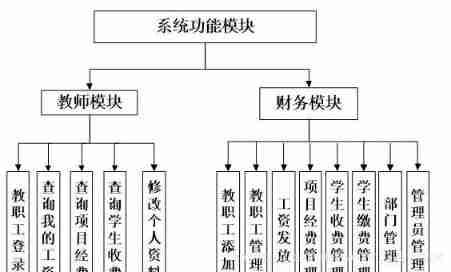
PHP campus financial management system for computer graduation design
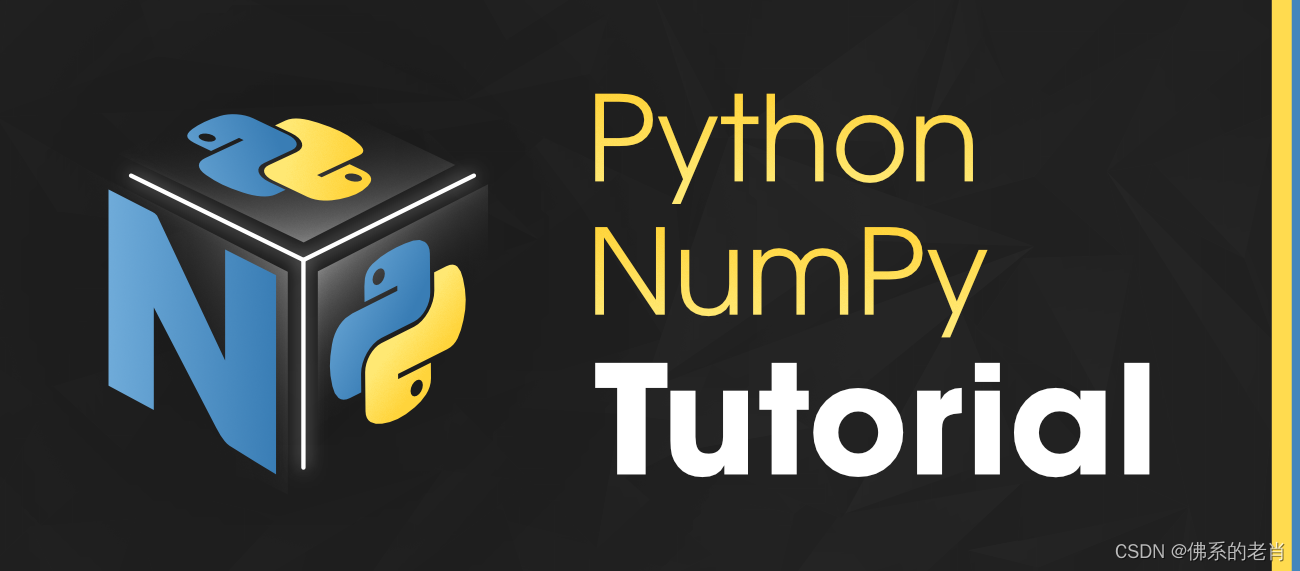
NumPy 数组索引 切片
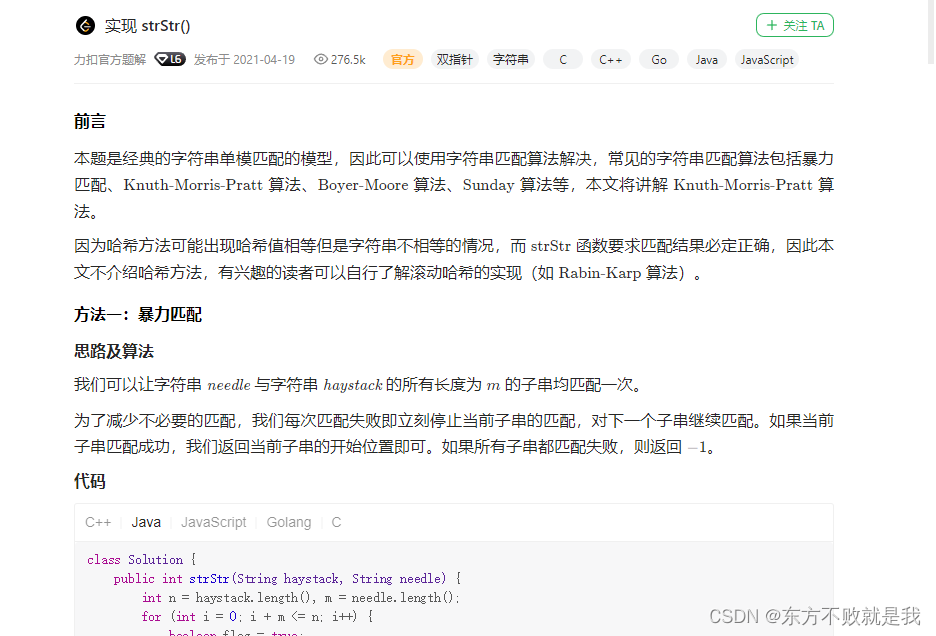
Leetcode3, implémenter strstr ()

Campus second-hand transaction based on wechat applet
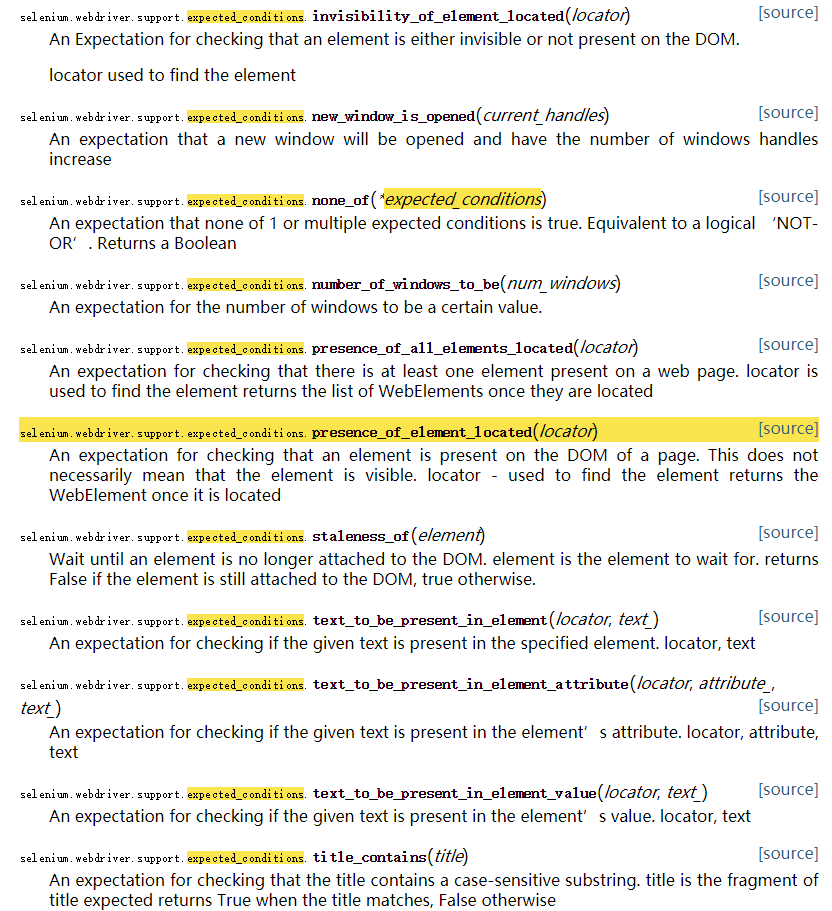
selenium 等待方式

Computer graduation design PHP enterprise staff training management system
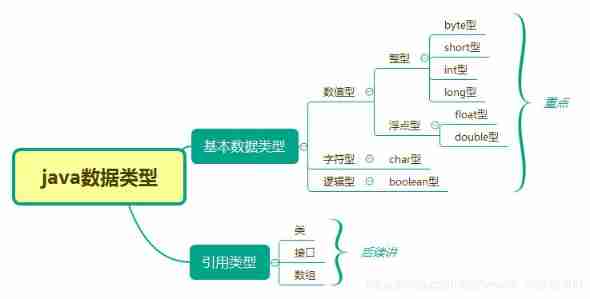
Prepare for the autumn face-to-face test questions
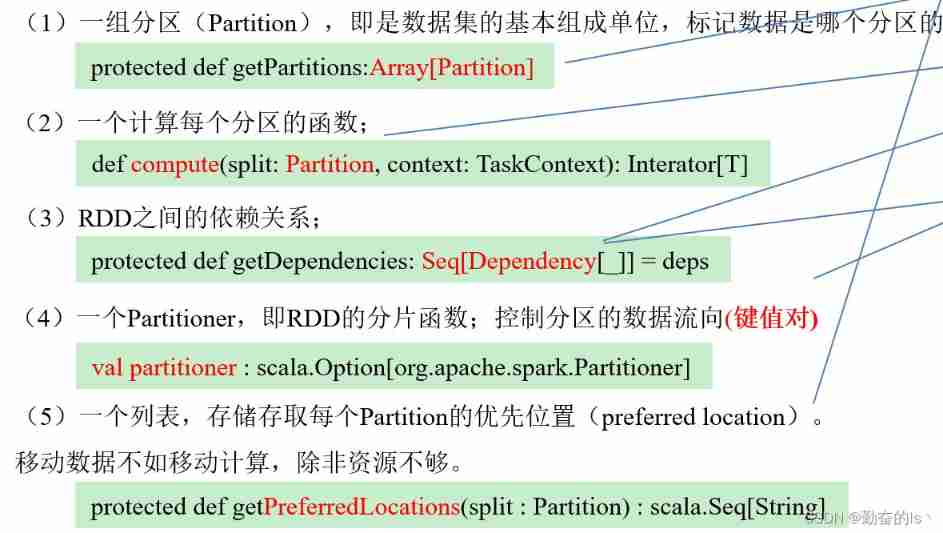
Overview of spark RDD

Extracting key information from TrueType font files
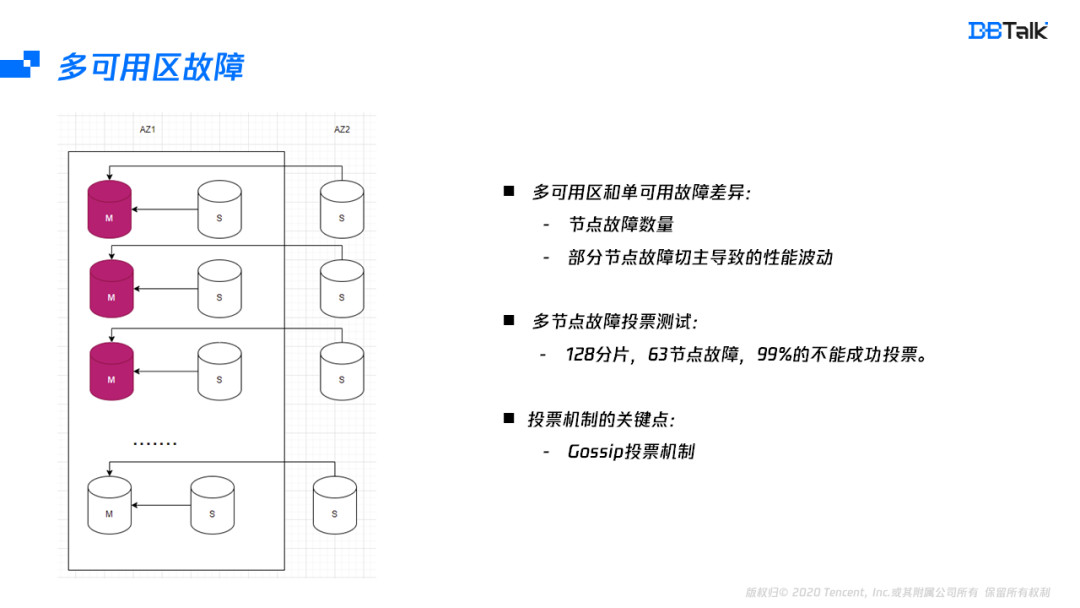
How does redis implement multiple zones?
随机推荐
Global and Chinese market of wheelchair climbing machines 2022-2028: Research Report on technology, participants, trends, market size and share
【机器人库】 awesome-robotics-libraries
[flask] official tutorial -part2: Blueprint - view, template, static file
leetcode-两数之和
Using SA token to solve websocket handshake authentication
Text editing VIM operation, file upload
Card 4G industrial router charging pile intelligent cabinet private network video monitoring 4G to Ethernet to WiFi wired network speed test software and hardware customization
[Jiudu OJ 09] two points to find student information
Blue Bridge Cup embedded_ STM32_ New project file_ Explain in detail
leetcode-2. Palindrome judgment
使用npm发布自己开发的工具包笔记
01.Go语言介绍
[flask] official tutorial -part3: blog blueprint, project installability
通过PHP 获取身份证相关信息 获取生肖,获取星座,获取年龄,获取性别
Accelerating spark data access with alluxio in kubernetes
Have a look at this generation
2022年版图解网络PDF
Comments on flowable source code (XXXV) timer activation process definition processor, process instance migration job processor
leetcode3、实现 strStr()
Flutter Doctor:Xcode 安装不完整